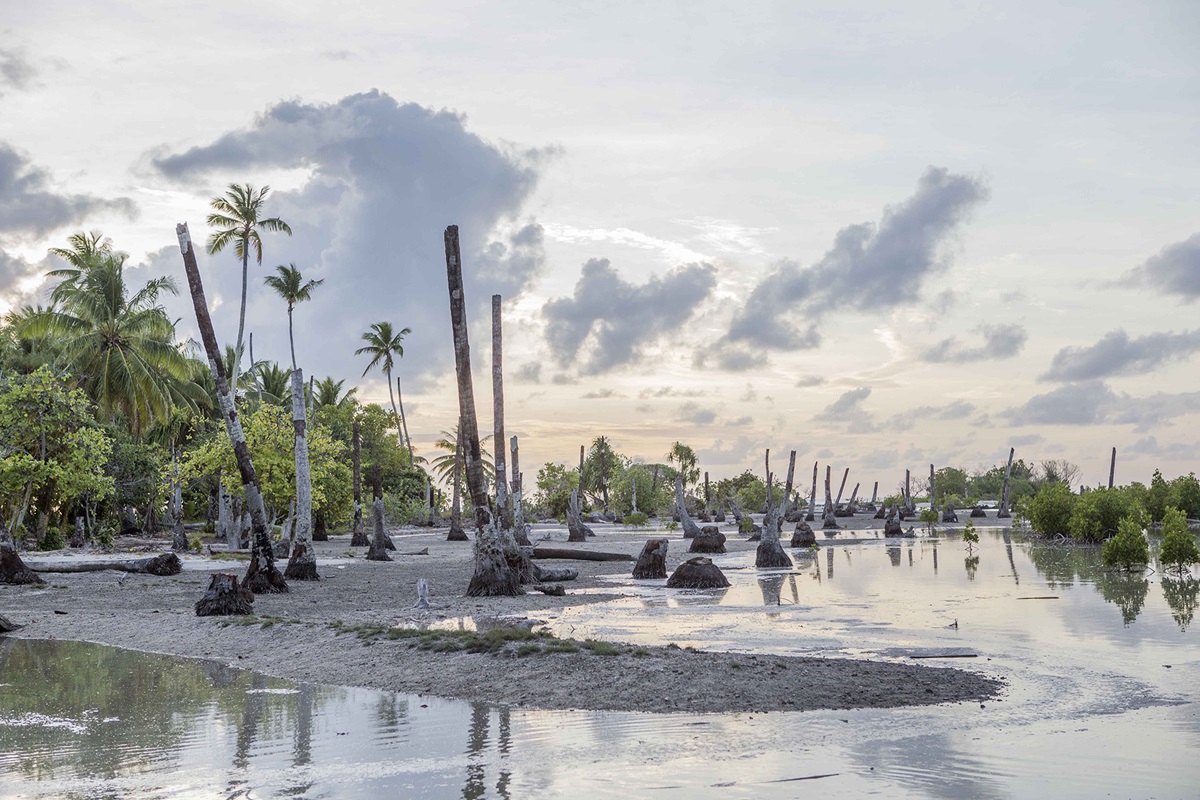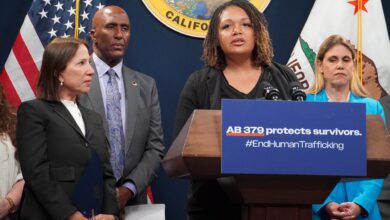El Niño Southern Oscillation (ENSO)

Key facts
- El Niño Southern Oscillation (ENSO) is one of the most important sources of annual global climate variability, second only to the earth–sun relationship that drives the seasons. El Niño and its counterpart La Niña are associated with characteristic patterns of rainfall and temperature, which can include extreme events such as flooding and drought.
- ENSO affects many parts of the globe, but most intensely impacts the tropics, including countries and areas in Africa, Latin America and South and South-East Asia that are particularly vulnerable to natural hazards.
- By altering climate conditions, ENSO can have severe effects on key health determinants through, among other factors, impacts on food security, air and water quality, ecosystems and health infrastructure safety. ENSO is also associated with altered transmission patterns of vector-borne, rodent-borne and waterborne diseases, as well as fish and shellfish poisoning.
- Early warning systems and anticipatory action can help reduce the impacts of extreme weather conditions exacerbated by ENSO.
Overview
El Niño Southern Oscillation (ENSO) is a naturally occurring large-scale climatic phenomenon involving fluctuating ocean temperatures in the central and eastern equatorial Pacific, coupled with changes in the overlying atmosphere. El Niño and La Niña are the oceanic components, while the Southern Oscillation is the atmospheric counterpart, thus giving rise to the term El Niño Southern Oscillation (ENSO). ENSO occurs in irregular cycles of 2–7 years and presents 3 phases: El Niño, La Niña and a neutral phase. An El Niño event is characterized by a period of sea-surface warming and consequent suppression of the nutrient-rich cold water up-welling off the coast of Peru and Ecuador, typically lasting between 12 and 18 months. In contrast, a La Niña event is characterized by a period of colder than average sea surface temperatures in the central and eastern Pacific Ocean and an intensification of the prevailing east to west surface winds.
ENSO and climate
The effects of each El Niño/La Niña event vary depending on the intensity, duration, time of year when it develops, and the interaction with other modes of climate variability. Not all regions of the world are affected, and even within a region, impacts can be different. Along with increased global temperatures, common regional influences of El Niño include:
- Africa: drier conditions in southern Africa and some areas in the Sahel; wetter conditions in equatorial east Africa during the short rainy season (October–December);
- Asia Pacific, central Asia: lower rainfall in South and South-East Asia; wetter conditions in the eastern-central Pacific islands and across the Hindu Kush mountain range in central Asia; and
- Latin America: drier conditions in northern Brazil; heavy rainfall in Central America, northern Peru, Ecuador, and the northern and southeastern parts of South America.
La Niña impacts tend to be opposite those of El Niño, with cooler global temperatures and:
- Africa: wetter than normal conditions in southern Africa; drier than normal conditions over equatorial east Africa (December to February);
- Asia Pacific, central Asia: higher than normal rainfall in countries including Indonesia, Malaysia and the Philippines; reduced rainfall in central Asia (January to May); and
- Latin America: wetter than normal conditions over northern Brazil; drier than normal conditions along the central and eastern Pacific coasts; a more active hurricane season in the Caribbean.
Health impacts
Local incidence of vector-borne diseases, wildfire smoke exposure, heat stress, drought-related health and nutritional impacts have all been observed to be influenced by ENSO events.
Observed associations between ENSO and health impacts are not linear or unequivocal but depend on the ENSO intensity, time of the year and other factors. Impacts tend to be more intense in less developed countries where populations have limited coping capacity and are often more vulnerable to the impacts of extreme weather and climate. Their livelihoods are often highly dependent on natural resources and rain-fed agricultural practices; housing typically lacks protection against extreme weather events; access to health care and safe drinking-water and adequate sanitation facilities may be limited; and infectious diseases determined by environmental conditions are often pre-existing.
Vector-borne diseases
Vectors, such as mosquitoes, that are responsible for the transmission of malaria, dengue and Rift Valley fever are sensitive to changes in temperature, rainfall and humidity, which determine the suitability of ecosystems for vector reproduction, development and activity.
Malaria
The effects of ENSO on malaria are most pronounced in epidemic-prone areas where climate conditions are generally not suitable for year-round vector reproduction. Small changes in climate conditions in these areas have the potential to change normally unsuitable habitats into viable habitats for mosquitoes that transmit malaria, or to temporarily extend the period of malaria susceptibility. The effect of ENSO on malaria is mediated by its impact on rainfall and temperature patterns. In dry areas, intense rainfall can create water puddles; in wet areas, drought can result in reservoirs of stagnant water, both of which are conducive to generation of new mosquito breeding sites. Decreased immunity acquired over time by inhabitants of these new malaria-prone areas can further increase the risk of outbreaks. Evidence of the association between ENSO and malaria has been found in southern Africa, South Asia and South America.
Air pollution
ENSO-related drought conditions can increase the risk of wildfires resulting in local and trans-boundary smoke pollution. The inhalation of fire smoke is a major public health problem, causing respiratory diseases and other harmful effects.
The El Niño-related drought of 1997 contributed to the exacerbation of forest fires in Brazil, Indonesia and Malaysia. In 2015, air quality in 6 South-East Asian countries was impacted by wildfires exacerbated by El Niño-related drought, including Indonesia where a state of emergency was declared due to hazardous air quality.
Extreme heat
Any transition from a La Niña to an El Niño phase will likely produce a rise in global average surface temperature, with warming tendencies affecting the development of extreme heat in the Southern Hemisphere. The joint influence of both El Niño warming and rising global temperatures caused by climate change amplifies the potential for extreme heat in many regions, creating deadly conditions for millions of people.
Learn more about heat and climate change
Drought and food insecurity
Food production is extremely sensitive to climate conditions. ENSO-related droughts and heavy rainfalls can therefore jeopardize food security. Some of the worst food crisis events have been associated with ENSO.
- The world food crisis of 1982–84, the most severe recorded, was also linked to El Niño, including famines that struck populations in the Horn of Africa and the Sahel.
- El Niño triggered the 1991–1992 drought in southern Africa, affecting nearly 100 million people.
- In Peru, a study found that children born during and after 1997–1998 El Niño, while controlling for other factors, were on average shorter and had less lean mass for their age and sex than expected had El Niño not occurred.
- A so-called triple dip La Niña event in 2020–23 resulted in 3 consecutive years of drought in Ethiopia, Kenya and Somalia, leaving millions of people facing severe hunger.
- Droughts in Brazil, north-east China, Indonesia, Marshall Islands, Papua New Guinea, and the Philippines have also been associated with ENSO.
Health preparedness
ENSO events can be predicted with some reliability several months in advance, allowing the climate community to prepare seasonal forecasts with enhanced precision. The increased predictability of climate events on seasonal to inter-annual timescales can help planners and health professionals anticipate, prepare for and respond to ENSO-related health risks. For example:
- In 2014, ENSO-related information produced by the International Research Institute for Climate and Society (IRI) for the malaria community in east Africa, provided time-sensitive information for interventions to reduce malaria transmission in high-risk areas.
- Countries where Enhanced National Climate Services (ENACTS) are being developed can share information on the past impacts of ENSO events, particularly related to the spatial and temporal distribution of rainfall and temperature changes at the district level.
WHO response
WHO protects human health from risks related to climate variability through its programmes on environmental and social determinants of health, emergency preparedness and response, infectious disease prevention and control, improving health research and evidence, and health system strengthening.
In accordance with mandates from the World Health Assembly, WHO supports countries to develop national strategies and plans of action to build health system resilience to climate change, to improve awareness and evidence of local climate impacts on health, as well as strengthening health system capacity to manage consequent health risks of extreme weather and climate change.
A joint WHO/World Meteorological Office (WMO) office for climate and health was established in 2014. This office supports WHO to improve health preparedness and decision making through enhanced use of weather and climate information, including in relation to ENSO.




